Cream Garden Ideas: Fresh Designs for a Cozy Outdoor Space
Creating a garden with a creamy color palette can bring a calm and sophisticated atmosphere to your outdoor space. Whether you’re using creamy flowers, textured foliage, or elegant garden structures, the possibilities are endless. A cream garden offers a serene retreat where you can unwind and enjoy nature’s beauty.
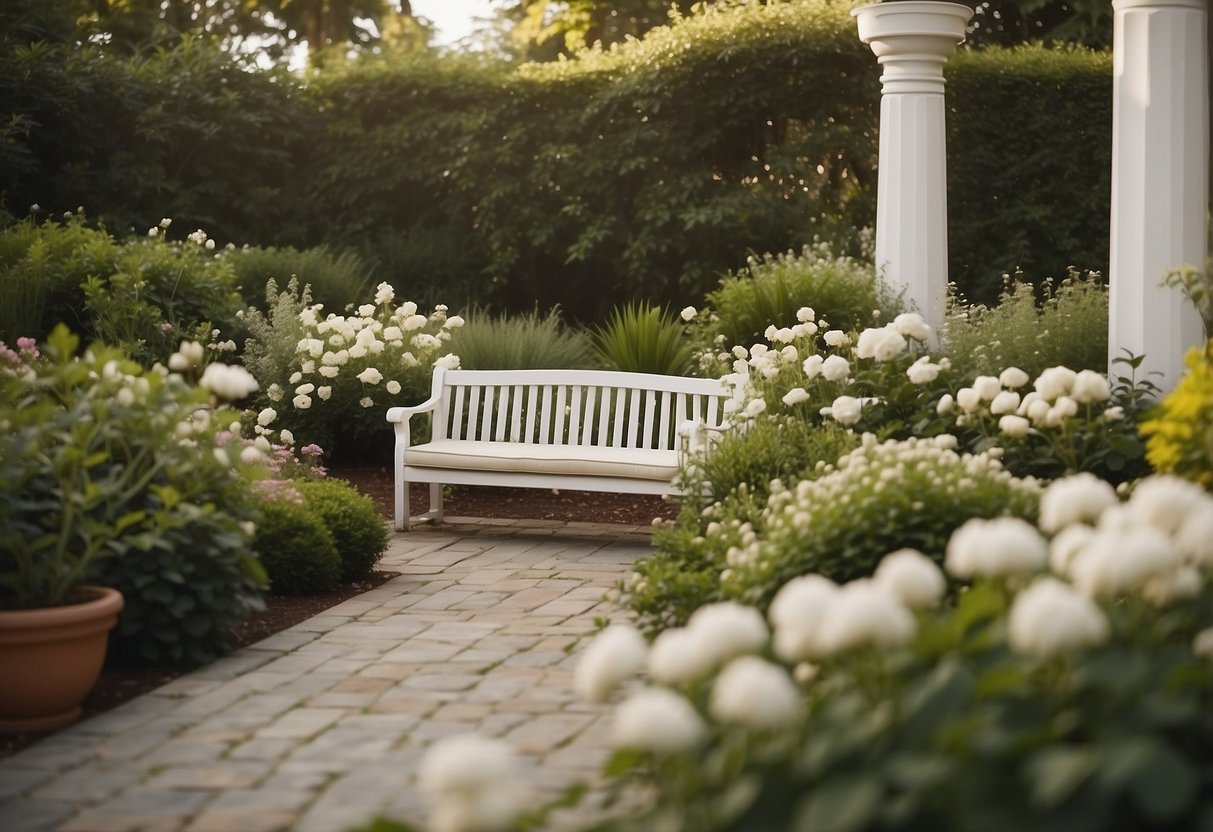
In this article, you’ll discover various ideas and inspiration for designing your cream garden. From plant selection to layout tips, you’ll find plenty of ways to make your garden look stunning. Embracing this gentle color scheme can transform your space into a peaceful sanctuary.
1) Creamy Hydrangea Bushes
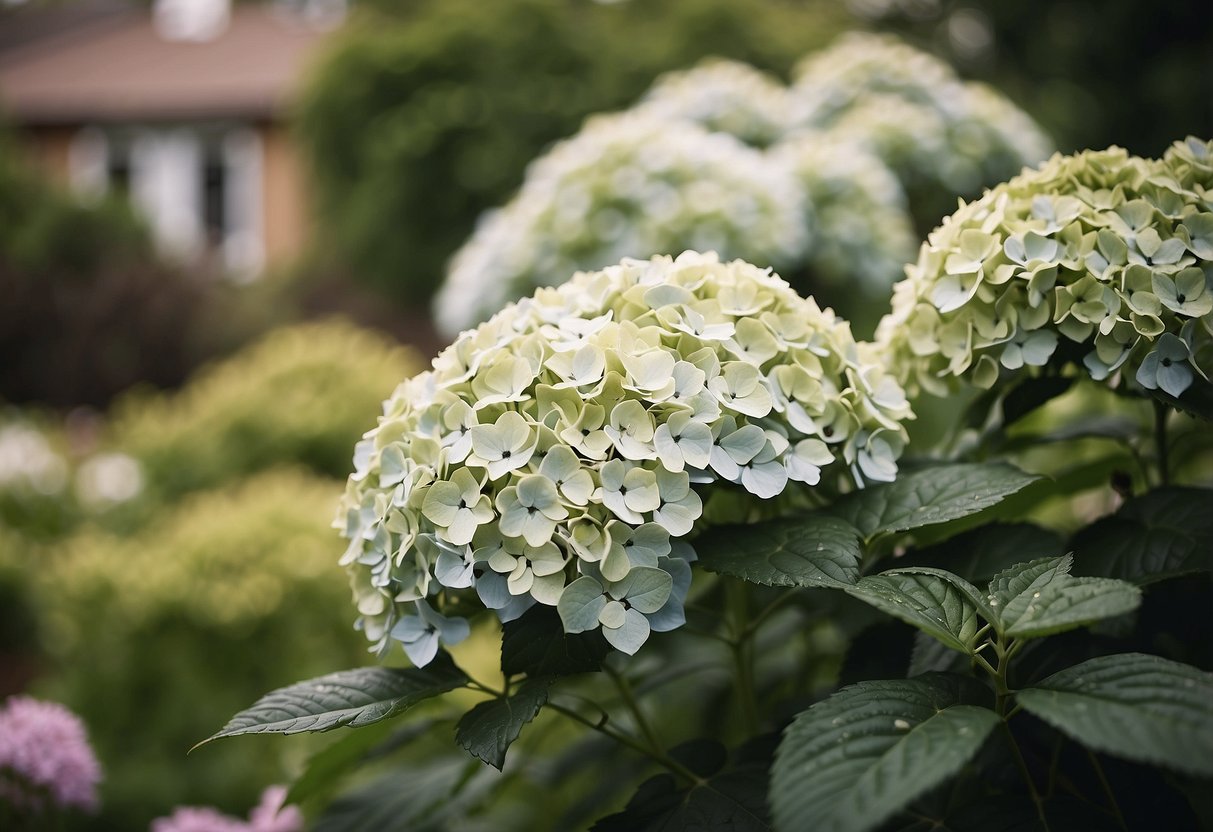
Cream hydrangeas can add a soft and elegant touch to your garden. These bushes are known for their large, fluffy blooms that range from white to a subtle cream color.
They grow quickly and can reach impressive heights, making them perfect for filling gaps in your garden borders.
For the best results, plant your hydrangeas in well-draining, organic-rich soil and provide consistent moisture. Partial shade is ideal to protect them from intense midday sun.
For more ideas on designing with hydrangeas, check out Homes & Gardens.
2) Ivory Rose Arbor
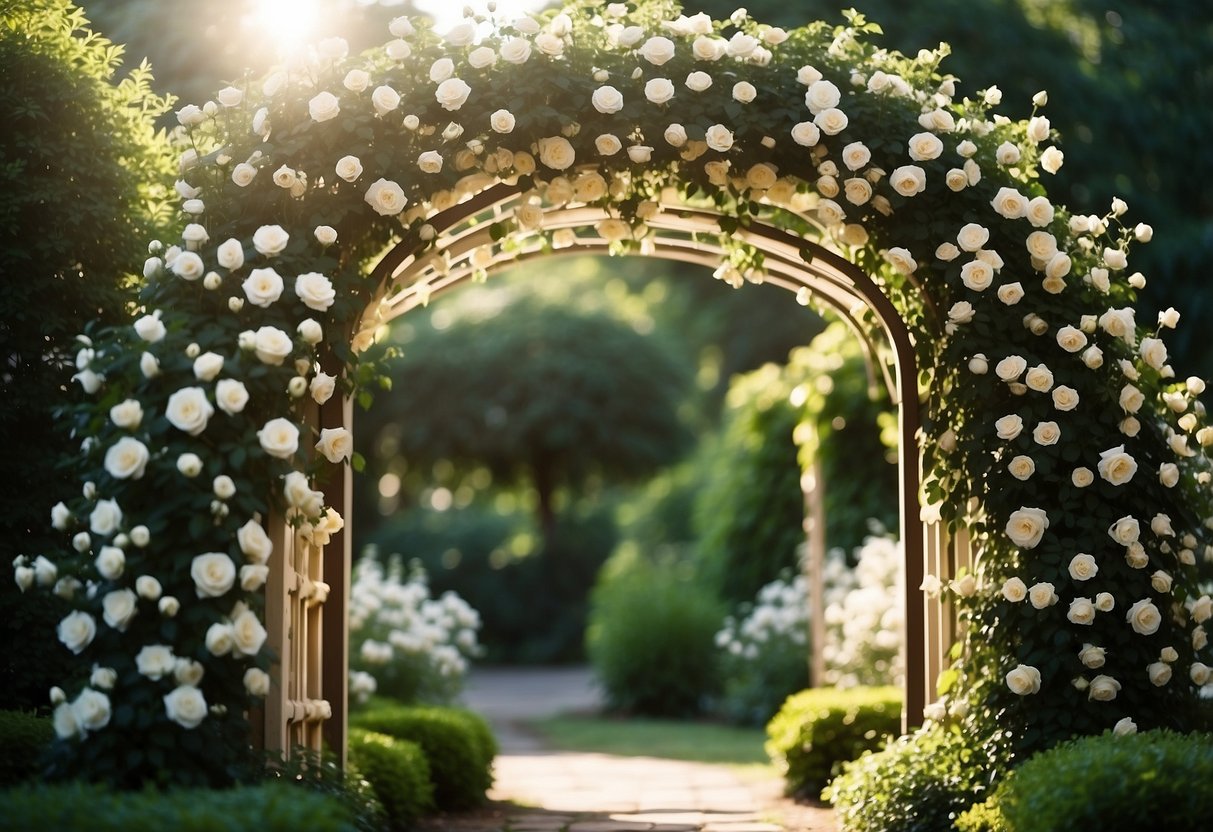
An Ivory Rose Arbor can add a touch of elegance to your garden. It serves as a beautiful focal point and supports the growth of climbing roses.
The soft ivory color of the roses against the sturdy arbor creates a romantic and enchanting atmosphere. Imagine walking through a garden path adorned with these lovely blooms.
Consider using an iron arbor for durability and classic appeal. The simplicity of iron allows the roses to stand out, making your garden even more delightful. For more ideas on different arbor styles, check out this arbor inspiration.
3) Pale Pink Peony Pathway
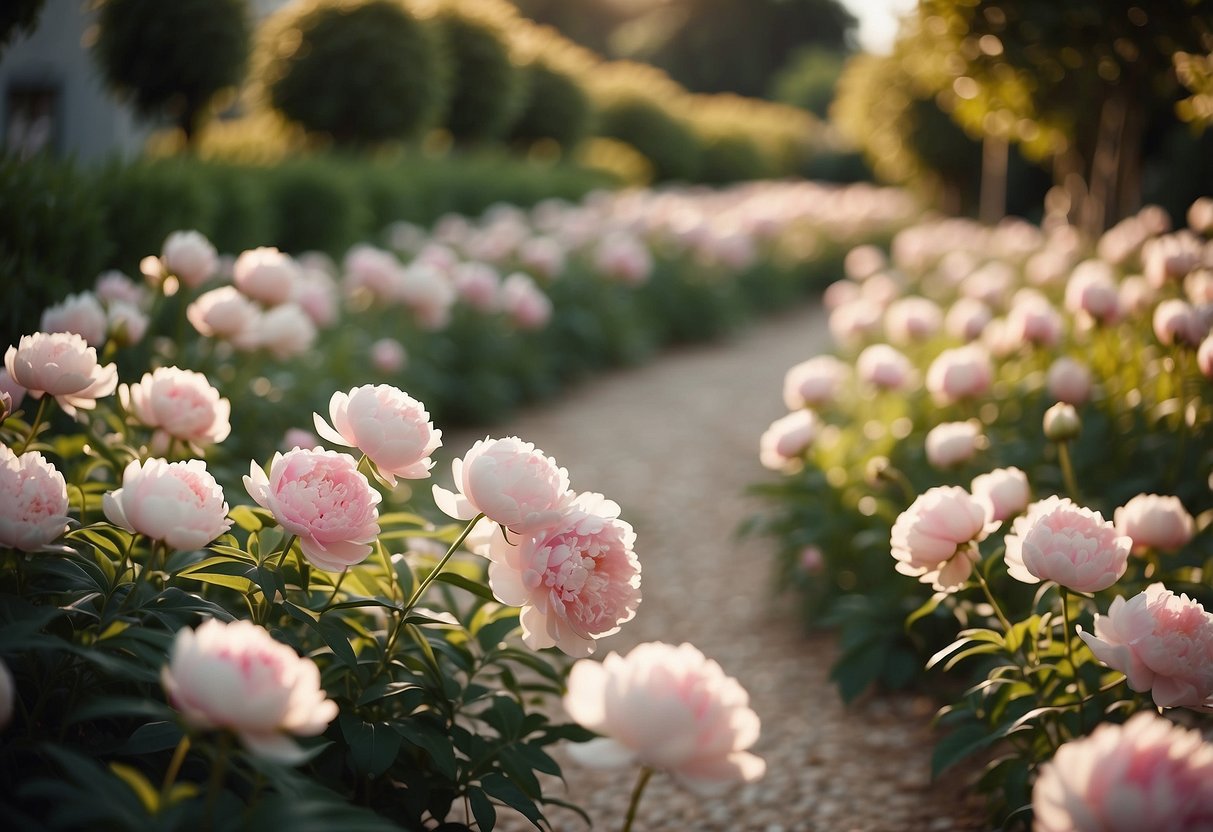
Imagine strolling down a pathway lined with pale pink peonies. The soft, blushing blooms on each side create a sense of peace and beauty.
Choose varieties like ‘Angel Cheeks’ for their ruffled, light pink flowers. These peonies not only look stunning but also add a touch of elegance to your garden.
4) Light Lavender Lilacs
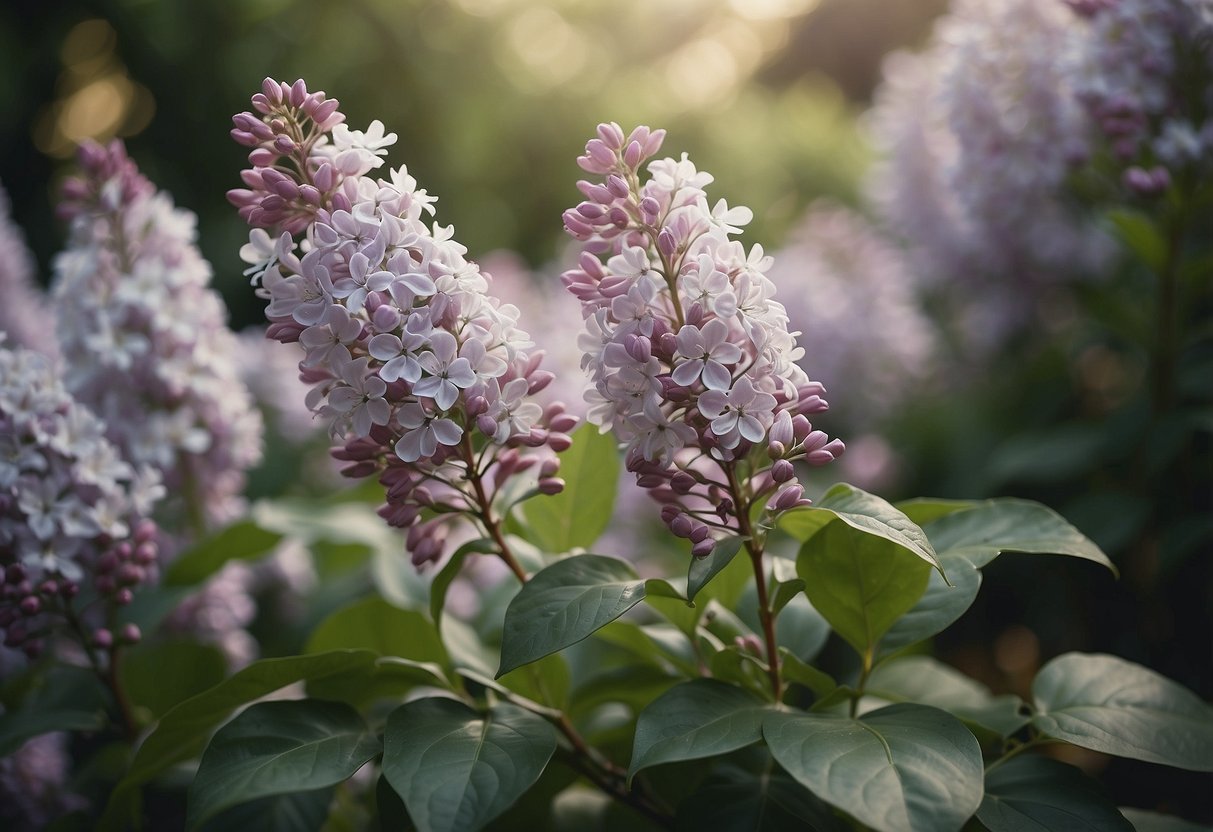
Light lavender lilacs can make your garden feel calm and peaceful. These blooms have a soft purple shade that brightens any space. They are perfect for adding a touch of elegance.
You can plant them along pathways or near seating areas. Pair them with white flowers or greenery for a beautiful contrast. Check out some ideas on Pinterest.
Their gentle fragrance is another great feature. Imagine relaxing in your garden, surrounded by the sweet scent of lilacs. Their beauty and aroma create a wonderful escape.
5) Frosted Hostas Border
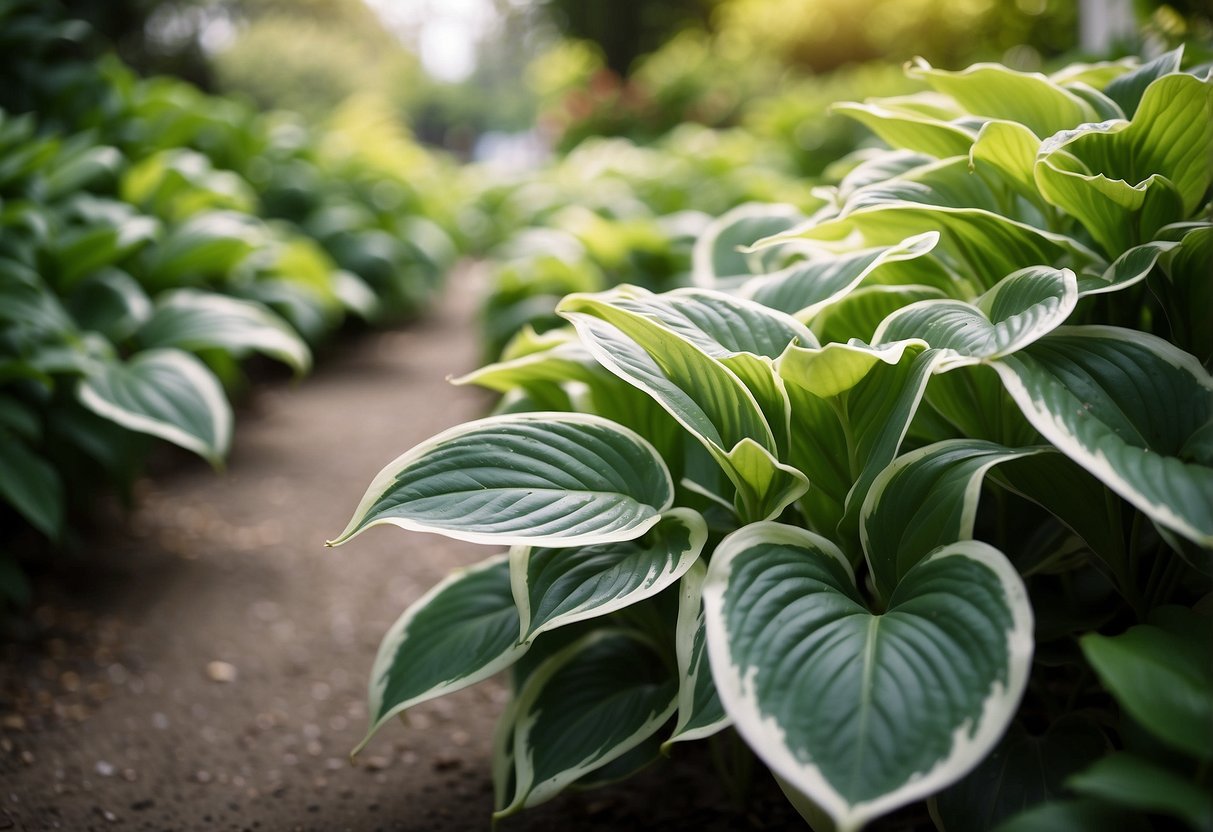
Using frosted hostas for your garden border can add a unique touch. These plants have beautiful, creamy white edges that stand out.
You can plant them along pathways or around garden beds. They look great in shady spots and are easy to care for.
Dividing and transplanting hostas ensures they grow well. Check out this guide on creative borders for more ideas.
6) Vanilla-White Gardenias
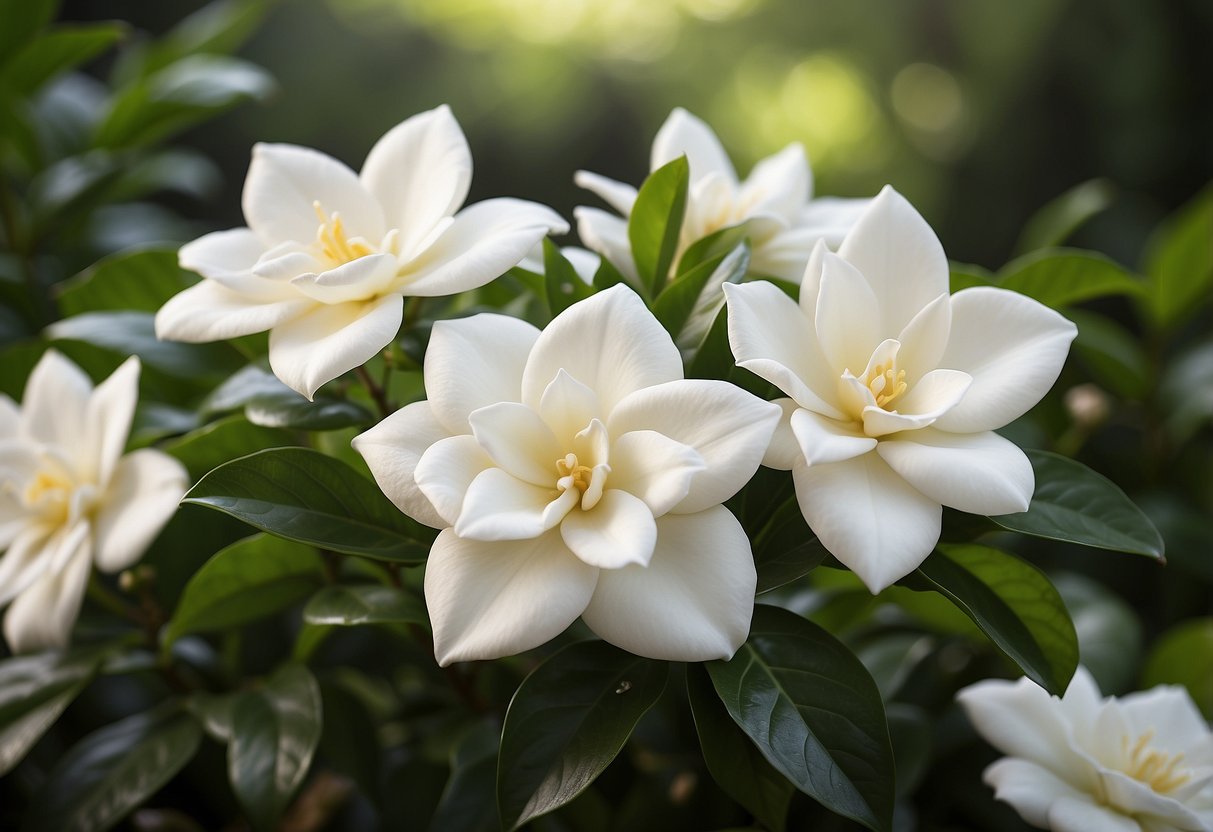
Vanilla-white gardenias are a beautiful addition to any cream garden. These flowering shrubs are popular for their sweet fragrance and elegant white blooms.
Gardenias thrive in warm and humid conditions, particularly in USDA zones 8 to 11. Be sure to give them plenty of sunlight and well-drained, acidic soil.
Regular watering is crucial, but avoid overwatering. Mulching can help retain soil moisture and keep the roots cool. With proper care, your gardenias will reward you with stunning flowers and a delightful scent. Read more about growing gardenias.
7) Buttercream Tulip Bed

A Buttercream Tulip Bed can bring a soft, pastel look to your garden. The tulip variety Tulipa ‘Verona’ is perfect for this. It grows to 10-16 inches in height and has buttercream-yellow flowers that look like roses.
Plant these tulips in full sunlight for the best blooms. They thrive in hardiness zones 3 to 8, making them quite versatile. Use them to edge a walkway or create a focal point in your garden. For more ideas, check out these yellow tulip varieties.
8) Soft Yellow Daisies

Soft yellow daisies bring a gentle touch to your garden. They are perfect for adding a light, sunny feel. Plant them in groups of at least three to make a bigger impact.
Mix them with taller plants like cosmos. This will help cover up any bare stems and give your garden a fuller look. Soft yellow daisies can also brighten up pots or garden borders.
Check out provenwinners.com for tips on varieties like Banana Cream Shasta Daisy. These daisies bloom all summer long and are disease-resistant, making them easy to grow.
9) Whipped Cream Astilbes
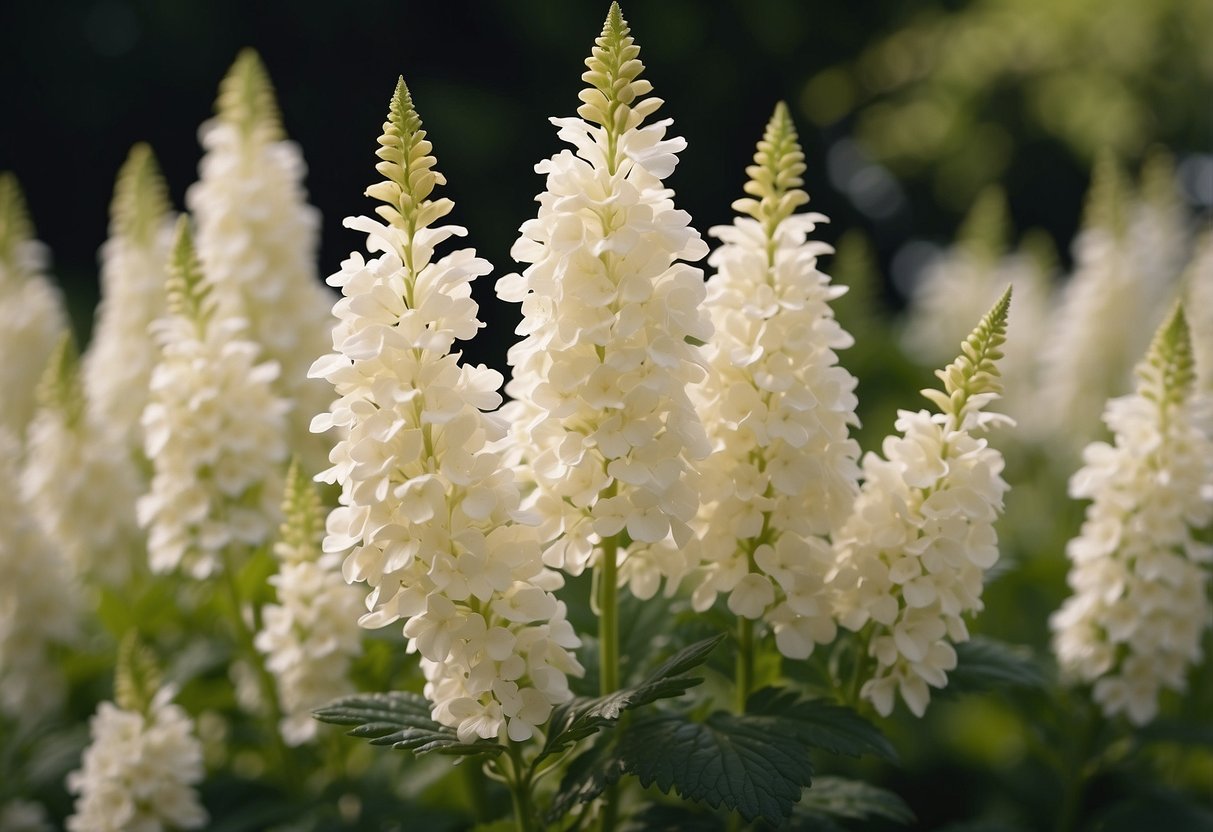
Whipped Cream Astilbes bring a fresh and creamy touch to your garden. Their fluffy white flowers look like whipped cream topping the green foliage.
These plants thrive in shady spots and provide a gentle, soothing contrast to darker plants. They grow best in moist, well-drained soil.
Enhance pathways or garden edges with these lovely blooms. Whipped Cream Astilbes are easy to maintain and can add a charming elegance to your outdoor space. Adding them to your garden can make it feel bright and inviting.
10) Milky Cosmos Corner
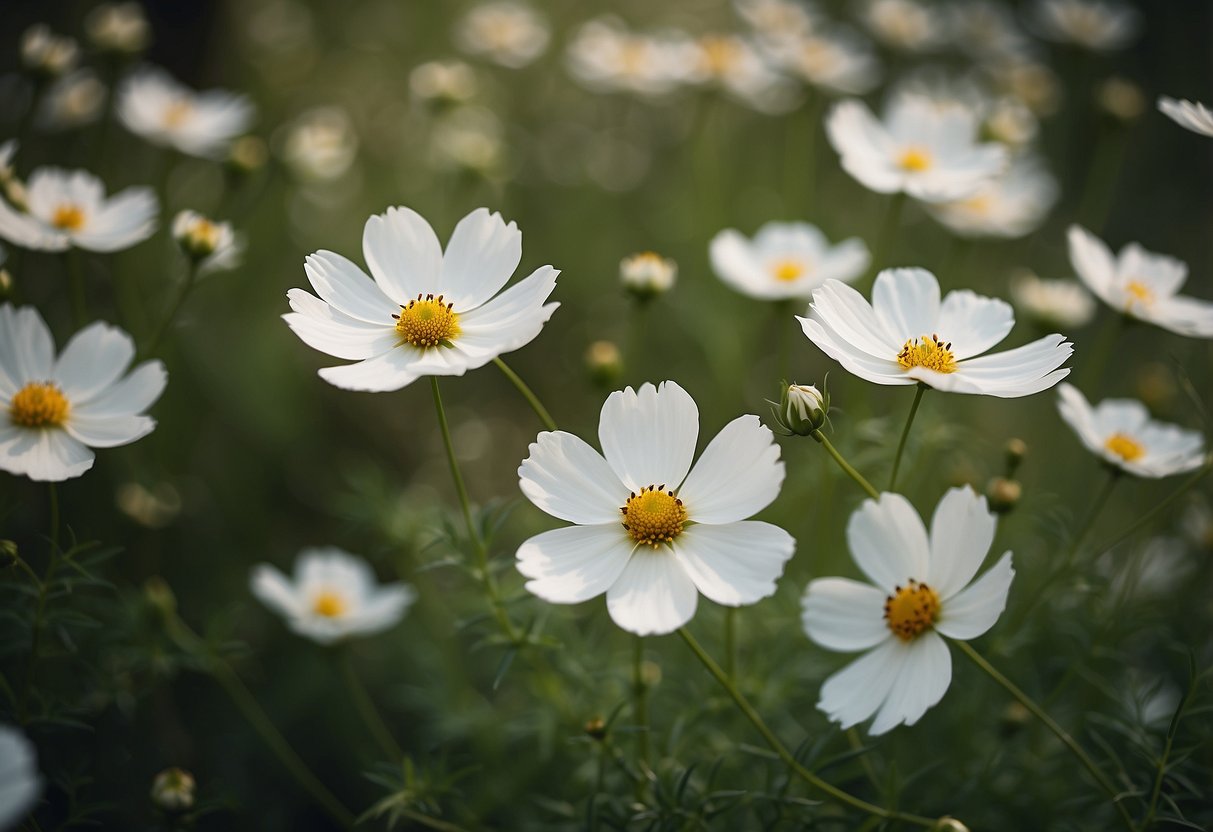
Create a dreamy Milky Cosmos Corner in your garden by planting white cosmos flowers. These bright blooms add a light and airy feel. Choose dwarf varieties and plant them 9-12 inches apart. Taller varieties should be spaced about 2 feet.
Use light potting mix and ensure the spot gets plenty of sunlight. This delightful corner will offer a peaceful spot to relax and enjoy. For more details, check how to grow cosmos.
Designing Your Cream Garden
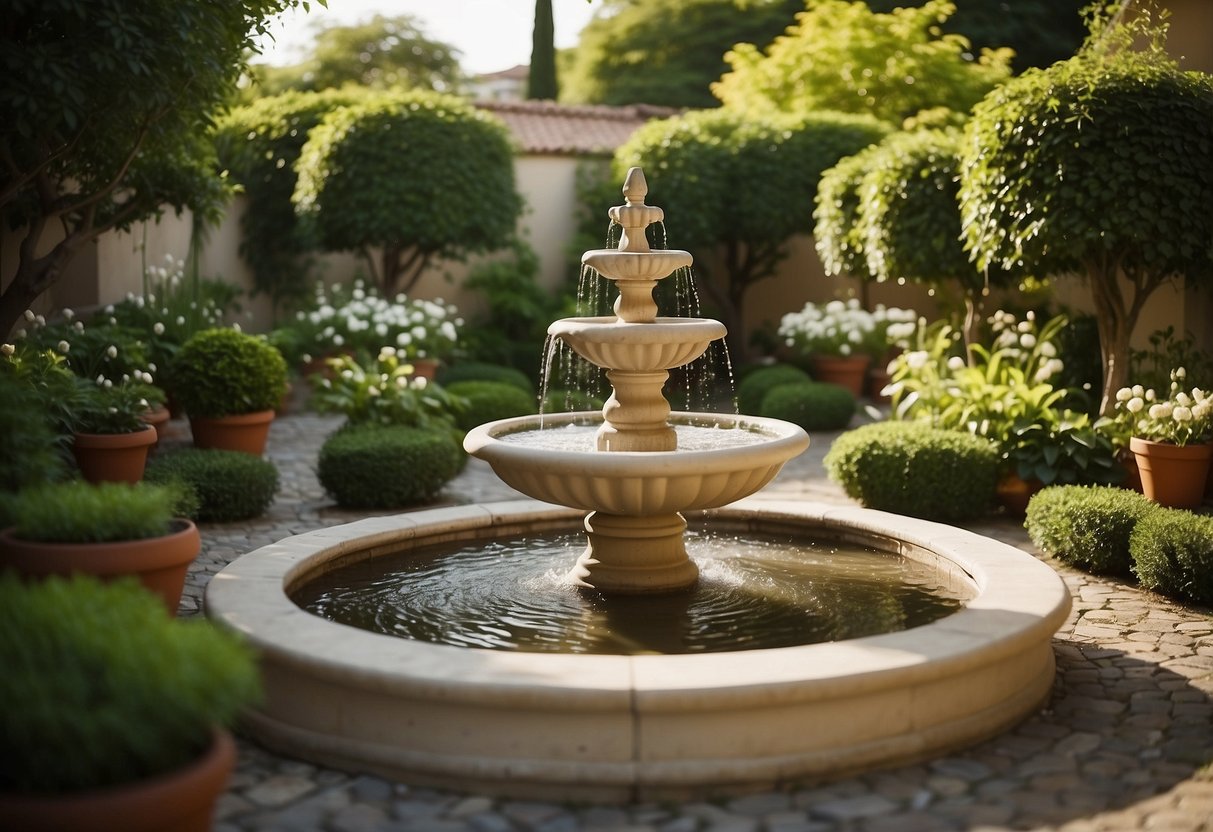
A cream garden becomes a peaceful retreat with the right plants and well-coordinated colors. Selecting plants that thrive together is key to creating a harmonious space.
Choosing the Right Plants
When picking plants for your cream garden, focus on varieties that bloom in shades of cream and white. Roses, peonies, and hydrangeas are excellent choices. These flowers not only look beautiful but also provide a range of blooming times, ensuring your garden stays vibrant throughout the season.
Consider adding foliage plants like lamb’s ear or dusty miller to add texture without overpowering the delicate cream tones. Plants like jasmine or gardenia can introduce pleasant scents, enhancing the peaceful atmosphere. Make sure to select plants that are suitable for your local climate.
Including some tall plants or shrubs can also provide structure and variety. Boxwood hedges or ornamental grasses can create interesting backdrops. Remember to check the growth habits of your chosen plants to maintain a balanced look throughout the year.
Coordinating Colors
Creating a well-coordinated color scheme is crucial in a cream garden. Alongside cream and white flowers, subtle touches of green from foliage plants help to create contrast and depth. Pale shades of pink, lavender, or soft yellow can also be incorporated sparingly to add interest without dominating the serene palette.
Use neutral-colored planters or stone pathways to blend seamlessly with the cream tones. White garden furniture can further enhance the aesthetic, making the space inviting without clashing with the plant colors.
For a more striking effect, use varying shades of cream in your plant choices. This can be achieved by selecting different varieties of the same species or mixing cream flowers with ivory or light beige blooms. This creates depth and keeps your garden visually appealing.
By carefully choosing and coordinating your plants and colors, you can create a serene and elegant cream garden that provides a relaxing sanctuary.
Maintenance Tips for a Cream Garden

To keep your cream garden thriving, you will need a smart watering schedule and effective fertilizing techniques. These tips will help you maintain the delicate balance that a cream garden requires.
Watering Schedule
Proper watering is vital for a cream garden. Most plants with cream-colored flowers prefer consistently moist soil. You should water deeply and less frequently to encourage deeper roots. Typically, watering once or twice a week is enough, but always check the soil moisture first.
During hot and dry periods, you might need to water more frequently. Early morning is the best time to water because it reduces evaporation and allows plants to absorb moisture before the day heats up.
Using a drip irrigation system or soaker hoses can be very efficient. These methods deliver water directly to the roots and minimize water waste. Additionally, mulch around your plants to retain soil moisture and reduce the need for frequent watering.
Fertilizing Techniques
Fertilizing your cream garden correctly will keep your plants healthy and vibrant. Use a balanced, slow-release fertilizer that provides essential nutrients over time. Apply fertilizer in the early spring and again in mid-summer for best results.
Liquid fertilizers are also effective and can be used for a quicker boost. Mix according to the package instructions and apply directly to the soil around your plants. Be careful not to over-fertilize, as this can lead to excessive foliage growth at the expense of blooms.
Organic options like compost or well-rotted manure can improve soil health and provide steady nutrition. Spread a thin layer around your plants and gently work it into the soil. Organic fertilizers not only feed your plants but also improve soil structure and promote beneficial microorganisms.







